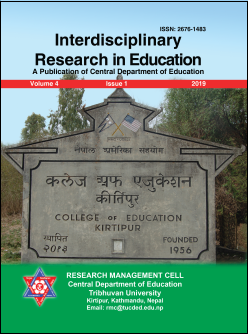Parents' Financing at Master Level in Semester System of Tribhuvan University
DOI:
https://doi.org/10.3126/ire.v6i1.43416Abstract
Parents' financing of education has been a major challenge and a policy issue to be settled in each country appropriately. This financing is defined as the direct private non-institutional cost to the students that occurs as a result of rent, uniform, coaching, transportation fare etc. To carry out this study post-positivism paradigm and survey design was followed being it quantitative research. The objective of the study was to analyze the direct private non-institutional financing of education at a master level under the semester system in TU. A total of 120 studentsfrom thesix Central Departments of University Campus, Kirtipur were selected randomly for the study. Based on results and discussion, it is concluded that to live in Kathmandu as a student of University Campus of Tribhuvan University, annually each student should manage the direct private non-institutional costs by NRS 1,17,615.00 ($999.73), NRS 1,45,945.80 ($1,240.54), NRS 1,41,685.60 ($1,204.33), NRS 1,54,384.35 ($1,312.27), NRS 1,99,841.90 ($1,698.66), NRS 1,66,590.00 ($1,416.02), and NRS 9,26,062.65 ($7,871.53) to get the master degree from the Central Department of Education, Nepali, English, Management, Zoology and Chemistry respectively. In addition, the students should spend NRS 56,268.77 ($478.28) annually in rent which is the higher by 36.46 percent over the total expenditure. Likewise, the female students have to spentby NRS 1,69,993.44 ($1,444.94) and the male students by NRS 1,38,693.84 ($1,178.9), however, the female students' fundingwas higher by NRS 31,299.60 ($266.05) or 22.57 percent thantheir male counterpart.
Downloads
Downloads
Published
How to Cite
Issue
Section
License
This license enables reusers to distribute, remix, adapt, and build upon the material in any medium or format for noncommercial purposes only, and only so long as attribution is given to the creator.




